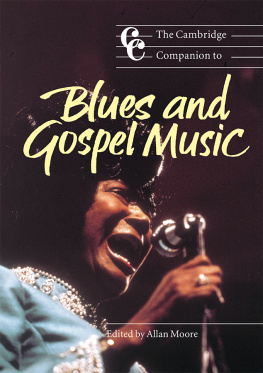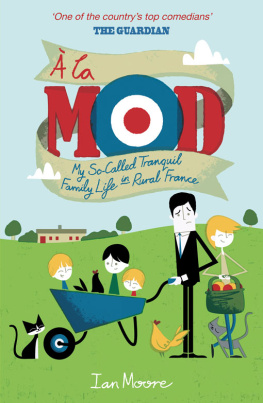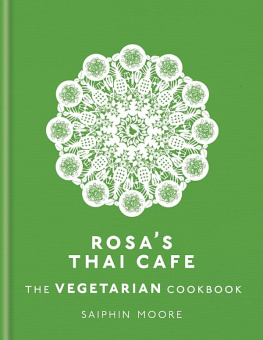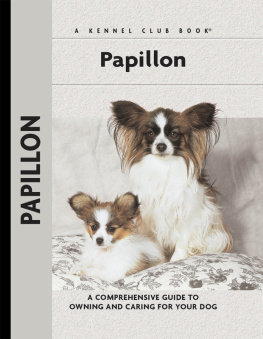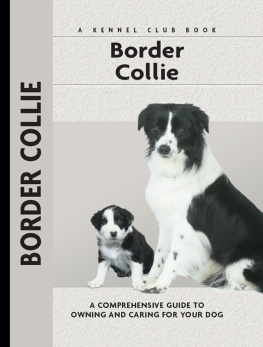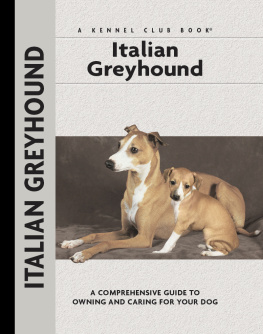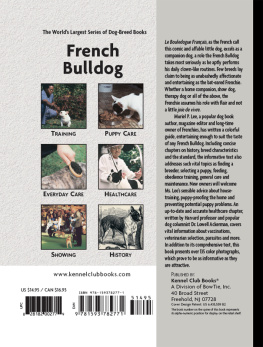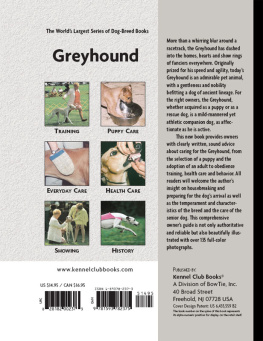Physical Characteristics of the Rough Collie
(from the American Kennel Club breed standard)
Head: When considered in proportion to the size of the dog, the head is inclined to lightness and never appears massive. General resemblance to a well-blunted lean wedge, being smooth and clean in outline and nicely balanced in proportion. On the sides it tapers gradually and smoothly from the ears to the end of the black nose. There is a very slight prominence of the eyebrows. The backskull is flat, without receding either laterally or backward and the occipital bone is not highly peaked.
Ears: In proportion to the size of the head, they are seldom too small. When in repose the ears are folded lengthwise and thrown back into the frill. On the alert they are drawn well up on the backskull and are carried about three-quarters erect, with about one-fourth of the ear tipping or breaking forward.
Muzzle: Well-rounded with blunt end, but not square. The underjaw is strong, clean-cut and the depth of skull from the brow to the under part of the jaw is not excessive. The teeth are of good size, meeting in a scissors bite.

Eyes: Foreface must be chiseled to form a receptacle for the eyes and they are necessarily placed obliquely to give them the required forward outlook. Eyes are almond-shaped, of medium size and never properly appear to be large or prominent. The color is dark and have a clear, bright appearance, expressing intelligent inquisitiveness.
Neck: Firm, clean, muscular, sinewy and heavily frilled. It is fairly long, carried upright with a slight arch at the nape and imparts a proud, upstanding appearance showing off the frill.
Coat: Abundant except on the head and legs. The outer coat is straight and harsh to the touch. The undercoat, however, is soft, furry and so close together that it is difficult to see the skin when the hair is parted. The coat is very abundant on the mane and frill.
Body: Firm, hard and muscular, a trifle long in proportion to the height. The ribs are well-rounded behind the well-sloped shoulders and the chest is deep, extending to the elbows. The back is strong and level, supported by powerful hips and thighs and the croup is sloped to give a well-rounded finish. The loin is powerful and slightly arched.
Tail: Moderately long, the bone reaching to the hock joint or below. It is carried low when the dog is quiet, the end having an upward twist or swirl.
Color: The four recognized colors are Sable and White, Tri-color, Blue Merle and White.
Legs: The forelegs are straight and muscular, with a fair amount of bone considering the size of the dog. The forearm is moderately fleshy and the pasterns are flexible but without weakness. The hind legs are less fleshy, muscular at the thighs, very sinewy and the hocks and stifles are well bent. The comparatively small feet are approximately oval in shape.
Size: Dogs are from 24 to 26 inches at the shoulder and weigh from 60 to 75 pounds. Bitches are from 22 to 24 inches at the shoulder, weighing from 50 to 65 pounds.
Contents

Though several theories exist as to the breeds exact origin, the Collie has always been prized for its ability as a sheepdog, its stamina and its intelligence. Follow the Collies journey from Scotland to England, where it became a favorite of royalty and of breeders who developed it into the breed we know around the world today.

If youre looking for a canine friend who loves to give and receive attention and affection, the Collie may be the dog for you! Learn about all aspects of the Collies personality, as well as physical characteristics and breed-specific health concerns, to determine if youre the right owner for this intelligent and versatile breed.

Learn the requirements of a well-bred Collie by studying the description of the breed set forth in the American Kennel Club standard. Both show dogs and pets must possess key characteristics as outlined in the breed standard.

Be advised about choosing a reputable breeder and selecting a healthy, typical puppy. Understand the responsibilities of ownership, including home preparation, acclimatization, the vet and prevention of common puppy problems.

Enter into a sensible discussion of dietary and feeding considerations, exercise, grooming, traveling and identification of your dog. This chapter discusses Collie care for all stages of development.

By Charlotte Schwartz
Be informed about the importance of training your Collie from the basics of housebreaking and understanding the development of a young dog to executing obedience commands (sit, stay, down, etc.).

Discover how to select a qualified vet and care for your dog at all stages of life. Topics include vaccinations, skin problems, dealing with external and internal parasites, common medical and behavioral conditions and a special section on eye disease.

Consider the care of your senior Collie, including the proper diet for a senior. Recognize the signs of an aging dog, both behavioral and medical; implement a special-care program with your vet and become comfortable with making the final decisions and arrangements for your senior Collie.

Enter the dog-show world and find out how shows are organized and how a champion is made. Go beyond the conformation ring to competitive trials and events.
KENNEL CLUB BOOKS COLLIE
ISBN 13: 978-1-59378-241-2
eISBN 13: 978-1-59378-898-8
Copyright 1999 Kennel Club BooksA Division of BowTie, Inc.
40 Broad Street, Freehold, NJ 07728 USA
Cover Design Patented: US 6,435,559 B2 Printed in South Korea
All rights reserved. No part of this book may be reproduced in any form,
by photostat, scanner, microfilm, xerography or any other means, or
incorporated into any information retrieval system, electronic or
mechanical, without the written permission of the copyright owner.
Photos by Carol Ann Johnson, with additional photographs by :
Norvia Behling, T. J. Calhoun, Doskocil, Isabelle Franais, Bill Jonas, Mikki Pet Products, Alice Roche and Steven Surfman.
Illustrations by Rene Low.

The rough-coated sheep dog, Hornpipe, and the smooth-coated sheep dog, Yarrow, are certainly closely related to the modern Collie. This painting is dated about 1881.
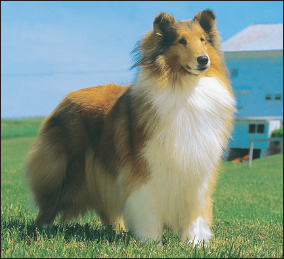
Todays Collies: Rough, at right, and Smooth, shown on opposite page.

Next page

